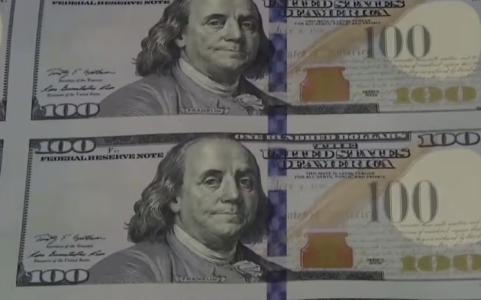Could a SNAP benefits error cost your state millions? Here’s what taxpayers need to know
By
Veronica E.
- Replies 6
A new proposal in Congress is drawing attention to costly mistakes in the SNAP benefits program.
SNAP supports over 41 million Americans each month, helping low-income households afford groceries.
But errors in how benefits are calculated and distributed are adding up—and now lawmakers want states to be held accountable.
A new bill could shift those costs back to taxpayers if states don’t fix their systems.
Here’s what’s in the proposal, how it could affect you, and what steps you can take to stay informed

What is SNAP, and where are the errors happening?
The Supplemental Nutrition Assistance Program (SNAP)—formerly known as food stamps—offers monthly food assistance to eligible low-income households.
Benefits are issued via a debit card and can be used for essentials like fresh produce, dairy, meat, and bread.
But errors in benefit amounts happen more often than many people realize.
Some recipients are paid too much, others too little.
These miscalculations—known as payment errors—can result from outdated systems, staffing shortages, and complex eligibility rules.
While fraud exists, most errors are caused by administrative issues, not intentional misuse.
In some states, those error rates have reached troubling levels.
In 2023, the national average error rate was 11.68%. Alaska’s error rate topped 60%.
Also read: What did President Trump leave out? The surprising Social Security plan missing from his Big, Beautiful Bill
What’s in the new bill?
The bill under discussion—the "One Big Beautiful Bill"—proposes a cost-sharing system to hold states accountable for excessive payment errors.
Under the plan, states with high error rates would have to cover a percentage of their SNAP costs:
To illustrate: Kansas had a 12.07% error rate in 2023 and distributed $417 million in SNAP benefits.
Under the bill, Kansas taxpayers could be responsible for more than $63 million in cost-share penalties.
Also read: What SNAP changes could mean for your grocery budget—23 governors speak out
Which states are getting it right—and which are struggling?
Only seven states kept their error rates below the 6% mark in 2023: Idaho, Iowa, South Dakota, Utah, Vermont, Wisconsin, and Wyoming.
Most other states, however, would face some level of penalty under the proposed guidelines.
At the other end of the spectrum, several states—including Alaska, Delaware, Hawaii, New Jersey, Washington, DC, and South Carolina—had error rates over 20%.
If you’re not sure how your state is performing, state agencies are required to report their error rates. It’s public information, and it’s worth checking.
Also read: New data-sharing rules for SNAP: What recipients need to know
When would the changes take effect?
If passed, the cost-sharing requirement would begin in fiscal year 2028, using error rate data from this year and next to determine penalties.
That gives states a short window to improve their systems.
If not, taxpayers could be left covering the bill—whether through increased state taxes or cuts to other programs.
Supporters say the bill would help reduce the national deficit by encouraging states to improve accuracy and accountability.
But for states that don’t act quickly, the financial consequences could ripple throughout local communities.
Also read: SNAP rules get an overhaul—Here’s what to know.
Is there any upside?
Possibly. The bill is still being debated and may be amended.
In addition to the cost-share rule, it includes potential financial support for families—such as a $1,000 bonus for certain qualifying households.
In the meantime, the legislation gives states time to review their systems, update technology, and train staff—steps that could significantly reduce payment errors and avoid penalties.
Also read: Will SNAP still cover your favorite beverages? What new state proposals say
What you can do
Even if you don’t receive SNAP benefits, this legislation could affect your taxes or your state budget. Here are a few things you can do:
Understanding how government programs are managed helps protect both your wallet and your community.
By staying informed and speaking up, you can play a part in shaping smarter, more accountable policies.
Read next: Are you one of the seniors who might be getting a boost in SNAP benefits? Find out how

Have you or someone you know been impacted by a SNAP benefits error? Do you think states should be financially responsible for these mistakes, or should the focus be on system-wide improvements?
Join the conversation below. At The GrayVine, we believe staying informed helps us all make smarter decisions—together.
SNAP supports over 41 million Americans each month, helping low-income households afford groceries.
But errors in how benefits are calculated and distributed are adding up—and now lawmakers want states to be held accountable.
A new bill could shift those costs back to taxpayers if states don’t fix their systems.
Here’s what’s in the proposal, how it could affect you, and what steps you can take to stay informed

A new bill could make states—and their taxpayers—responsible for costly SNAP benefit errors. Image Source: YouTube / WPLG Local 10.
What is SNAP, and where are the errors happening?
The Supplemental Nutrition Assistance Program (SNAP)—formerly known as food stamps—offers monthly food assistance to eligible low-income households.
Benefits are issued via a debit card and can be used for essentials like fresh produce, dairy, meat, and bread.
But errors in benefit amounts happen more often than many people realize.
Some recipients are paid too much, others too little.
These miscalculations—known as payment errors—can result from outdated systems, staffing shortages, and complex eligibility rules.
While fraud exists, most errors are caused by administrative issues, not intentional misuse.
In some states, those error rates have reached troubling levels.
In 2023, the national average error rate was 11.68%. Alaska’s error rate topped 60%.
Also read: What did President Trump leave out? The surprising Social Security plan missing from his Big, Beautiful Bill
What’s in the new bill?
The bill under discussion—the "One Big Beautiful Bill"—proposes a cost-sharing system to hold states accountable for excessive payment errors.
Under the plan, states with high error rates would have to cover a percentage of their SNAP costs:
- Under 6%: No penalty
- 6% to under 8%: State pays 5% of costs
- 8% to under 10%: State pays 10%
- 10% or higher: State pays 15%
To illustrate: Kansas had a 12.07% error rate in 2023 and distributed $417 million in SNAP benefits.
Under the bill, Kansas taxpayers could be responsible for more than $63 million in cost-share penalties.
Also read: What SNAP changes could mean for your grocery budget—23 governors speak out
Which states are getting it right—and which are struggling?
Only seven states kept their error rates below the 6% mark in 2023: Idaho, Iowa, South Dakota, Utah, Vermont, Wisconsin, and Wyoming.
Most other states, however, would face some level of penalty under the proposed guidelines.
At the other end of the spectrum, several states—including Alaska, Delaware, Hawaii, New Jersey, Washington, DC, and South Carolina—had error rates over 20%.
If you’re not sure how your state is performing, state agencies are required to report their error rates. It’s public information, and it’s worth checking.
Also read: New data-sharing rules for SNAP: What recipients need to know
When would the changes take effect?
If passed, the cost-sharing requirement would begin in fiscal year 2028, using error rate data from this year and next to determine penalties.
That gives states a short window to improve their systems.
If not, taxpayers could be left covering the bill—whether through increased state taxes or cuts to other programs.
Supporters say the bill would help reduce the national deficit by encouraging states to improve accuracy and accountability.
But for states that don’t act quickly, the financial consequences could ripple throughout local communities.
Also read: SNAP rules get an overhaul—Here’s what to know.
Is there any upside?
Possibly. The bill is still being debated and may be amended.
In addition to the cost-share rule, it includes potential financial support for families—such as a $1,000 bonus for certain qualifying households.
In the meantime, the legislation gives states time to review their systems, update technology, and train staff—steps that could significantly reduce payment errors and avoid penalties.
Also read: Will SNAP still cover your favorite beverages? What new state proposals say
What you can do
Even if you don’t receive SNAP benefits, this legislation could affect your taxes or your state budget. Here are a few things you can do:
- Stay informed: Look up your state’s SNAP error rate and follow local discussions.
- Reach out to lawmakers: Ask what’s being done to fix errors and prevent penalties.
- Share with others: Talk to friends, neighbors, and family members—especially those who rely on SNAP.
Understanding how government programs are managed helps protect both your wallet and your community.
By staying informed and speaking up, you can play a part in shaping smarter, more accountable policies.
Read next: Are you one of the seniors who might be getting a boost in SNAP benefits? Find out how
Key Takeaways
- A new budget proposal could hold states financially responsible for errors in administering SNAP, the food assistance program that supports over 41 million Americans.
- Under the bill, states with high payment error rates would pay a percentage of their total SNAP costs, with Kansas potentially owing $63 million due to a 12.07% error rate in 2023.
- Only seven states had error rates low enough to avoid penalties; most would face cost shares if the bill becomes law.
- If passed, the cost-share provision would begin in fiscal year 2028, potentially leading to increased state taxes or service cuts unless error rates improve.
Have you or someone you know been impacted by a SNAP benefits error? Do you think states should be financially responsible for these mistakes, or should the focus be on system-wide improvements?
Join the conversation below. At The GrayVine, we believe staying informed helps us all make smarter decisions—together.






